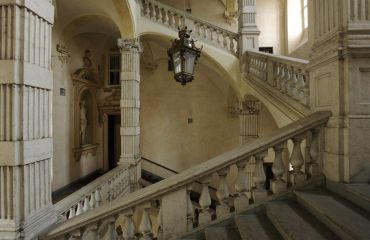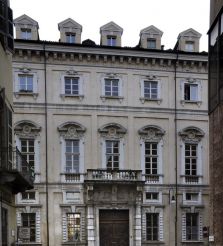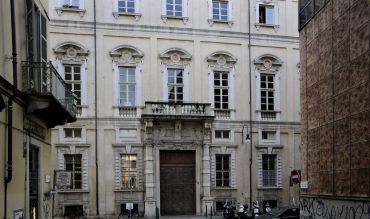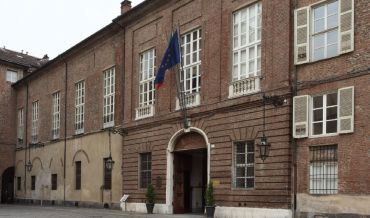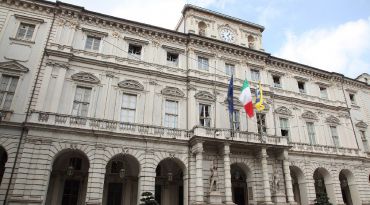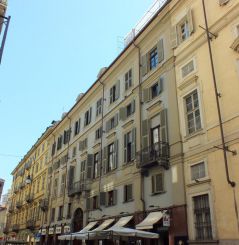Graneri Palace, Turin
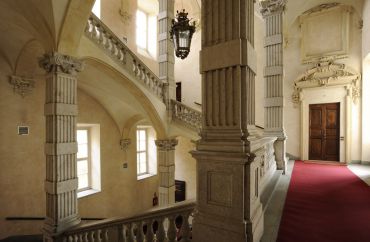
Graneri Palace (Palazzo Graneri della Roccia) is one of the most luxurious and presentable palace in Turin. Its interior makes you admire it, but in fact the palazzo was not a noble residence. At least not quite. The building in the center of the city in the 19th century became the real art’s cradle of Piedmont. And if you want to fully have a taste of the Turin luxury of past centuries, you cannot miss this palace.
History of the palace
The construction of the palazzo was commissioned in 1681 by the high-ranking abbot Marc'Antonio Graneri d'Entremont. For two years, about 50 different projects of famous architects were considered. And in 1683 the owner approved the sketches of Giovanni Francesco Baroncelli. The works lasted for many years, and were completed after the death of the author of the project, in 1699.
For many years, Graneri mansion in Turin was the residence of the family of the Catholic nobility. In 1858, the Circolo degli artisti society of artists originated here, founded in 1847 and officially approved by royal decree on August 15, 1857. Since then, the palace has become the center of the cultural life of Turin. At the end of 1943, it suffered from explosions of incendiary bombs, but by June 1944 it had already been restored.
In 2006, the Circolo dei Lettori society replaced the association of artists in the building, which continued the cultural activities of its predecessors.
Architecture and interior
Walking along the street near the palace, it is easy to miss it, mistaking it for another regular city building. You cannot make such a mistake! Indeed, the exterior façade of the three-story mansion is made in a very characteristic Baroque style and is very similar to hundreds other houses in the city center. But the moment you open a carved wooden door, placed between marble columns, you get into a fairy tale. The visitor's eyes are presented with a magnificent atrium that leads to the courtyard of honor. And here you can admire the luxurious façade of the building with a central hull and two short wings. Such U-shaped plan is emphasized by elegant porticoes with dominating arches.
An interesting fact is that porticoes typical for Turin are located only on one side. From the vestibule a monumental staircase with a square base, supported by impressive columns, leads to the main floor. It is a gallery, with large windows from which you can clearly see the courtyard. In the building of the palace there are several other equally beautiful halls and rooms:
- Big hall. It is one of the largest in the city. Its interior is rich in bas-reliefs, drawing inspiration from the exhibition in the Royal Palace, dedicated to the goddess Diana.
- Game room. It was used as a bedroom until 1860, then there was a billiard room, and in 1900 tables for card games were also added. The walls are decorated with numerous paintings created by members of the society of artists.
- Music Hall. It is secluded and intimate, has two large mirrors, pictures decorating the room often depict the musical instrument of the lyre, which gave the name of the hall.
- Hall of Artists. Formerly, solemn receptions were held here, and today it is used as a reading room and has numerous portraits of artists on the walls.
- Hall of philosophers. Initially, it was the bedroom of the owner of the mansion. Today it is a room with antique furniture. Paintings of Michelangelo’s disciples hang above the doors, and the ceiling is decorated with frescoes of mythological themes "Diana" and "Endimione".
Events and facts
Today, various cultural events are regularly held here: art exhibitions, literary evenings, theater performances and small concerts. During 150 years of existence of the Society of Artists, many interesting cultural events took place in the palace.
- In 1859, there was a famous dance with the participation of Princess Maria Clotilde di Savoia and her fiancé Gerolamo Bonaparte.
- In 1905, the performances of the famous cellist Arturo Toscanini and the opera singer Francesco Tamagno were held in a large hall.
- An interesting fact is the presence of a high observation tower in the building, which was demolished in 1976. But part of the spiral staircase leading to it, remained.
How to get there
Graneri Palace in Turin is located on Via Conte Giambattista Bogino, 9. Within a 5-minute walk there are many historical palaces and museums, including the Carignano Palace, the Museum of Radio and Television and the Mole Antonelliana. The nearest public transport station is Rossini. Trams № 7, 13, 15, and buses № 13N, 55, 56, N04, N10, S04, W01, W15, W60 go to it.
Opening hours: Monday to Friday from 15:30 to 19:30. Saturday and Sunday are the days off. For information on exhibitions, excursions and other events, you can call (+39) 011 8128718.



